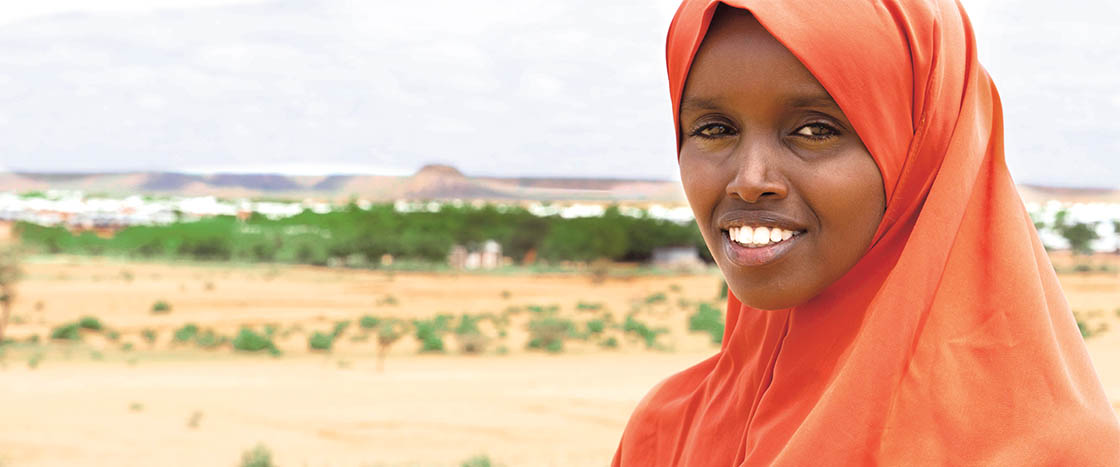You would never plan to become a refugee—to flee your home because your life is in danger. Yet today, there are 25.9 million refugees, more than the world has seen in nearly a century.
There are many reasons a person might become a refugee.
Maybe you live in a country torn apart by war, and your house was bombed to rubble.
Maybe you live in a place where you and your family are being attacked because of your religion.
Maybe you live in a region where food is scarce, and you are facing starvation.
Or maybe you are like 15-year-old Bilan [BEE-lawn], and you were chased from your home by violence.
Not so long ago, Bilan was a typical kid. She and her family lived in a comfortable home in Mogadishu, Somalia, a country in East Africa. She went to school and had many friends. With her twinkling eyes and shy smile, Bilan seems like someone you would want as a friend too.
But life in Somalia was difficult—and dangerous. Since 1991, different groups in the country have been at war. Seemingly endless waves of violence have torn the nation apart. Hotels, restaurants, and homes have been bombed. Factories have been looted. Schools have been closed.
At the same time, widespread droughts have swept across Somalia. The droughts have dried up crops, killed off farm animals, and caused many to go hungry. Famine has killed 260,000 Somali men, women, and children—and left many more sick and starving.
Hundreds of thousands of Somalis have fled across the border into neighboring countries, like Kenya and Ethiopia. They are desperately trying to escape these terrible situations.
Four years ago, Bilan became one of them.
She still remembers when her mother told her that they had to leave, that they were going to Ethiopia, where they could be safe.
Where will we live? Bilan worried. What will become of us?
The journey out of Somalia took Bilan and her family about 10 days. So much was left behind: treasured photographs, favorite clothes, beloved books. They crossed over the border into Ethiopia with little more than the clothes they were wearing.
You would never plan to become a refugee—to flee your home because your life is in danger. Yet today, there are almost 26 million refugees, more than the world has seen in nearly 100 years.
There are many reasons a person might become a refugee.
Maybe you live in a country torn apart by war, and your house was bombed to rubble.
Maybe you live in a place where you and your family are being attacked because of your religion.
Maybe food is scarce where you live, and you are in danger of starving.
Or maybe, like 15-year-old Bilan [BEE-lawn], you were chased from your home by violence.
Not so long ago, Bilan was a typical kid. She and her family lived in a comfortable home in Somalia, a country in East Africa. She went to school and had many friends. With her twinkling eyes and shy smile, Bilan seems like someone you would want as a friend too.
But life in Somalia was hard. It was dangerous too. Since 1991, different groups in the country have been at war. Violence has torn the nation apart. Hotels, restaurants, and homes have been bombed. Factories have been looted. Schools have been closed.
At the same time, droughts have swept across Somalia. The droughts have dried up crops, killed off farm animals, and caused many to go hungry. Famine has killed 260,000 Somalis. Many more have been left sick and starving.
Hundreds of thousands of Somalis have fled across the border into neighboring countries, like Kenya and Ethiopia. They are trying to escape these dangers.
Four years ago, Bilan became one of them.
She remembers when her mother told her that they were going to Ethiopia.
Where will we live? Bilan worried. What will become of us?
The journey out of Somalia took Bilan and her family about 10 days. So much was left behind: treasured photos, favorite clothes, beloved books. They arrived in Ethiopia with little more than the clothes they were wearing.


